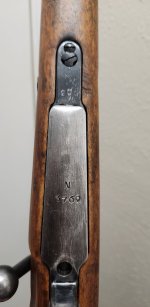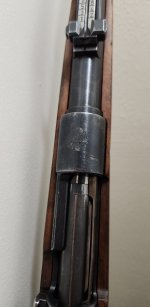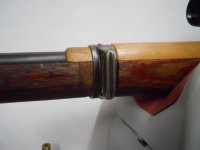I think it's hard to say to what level the Yugoslavs mixed and matched parts due to the scrubbed receiver markings and renumbered bolts. Some of those odd "W" prefix rifles with the codes intact suggest they did, as the band style and buttplate type on many of those don't fit the style used for the year on the receiver. I would suspect there was a lot of forced matching of parts in most cases, just like an RC. You might find evidence of the receiver origin as well as some other parts, but if the barrel has been replaced, the sight components most likely are not original to the rifle as it was originally made. They are almost all put together with German WW2 parts though. Yugoslavia did make some replacement stocks for these later as well.
Looking at the photos, it looks like you have a Yugoslav made replacement barrel on yours, and the slightly shortened stock modification. Those are most often good bores and good shooting rifles.









